Was This Hidden Closet Part of the Underground Railroad in Brooklyn?
Get an exclusive look inside the Lott House, one of the oldest buildings in Brooklyn!


On the campus of The City College of New York, across from the iconic Shepard Hall and in front of the North Academic Center sits the Adolph Lewisohn Plaza, which contains the last remnants of the lost Lewisohn Stadium. This Roman amphitheater-like stadium stood from 1912 to 1973, when it was demolished. It hosted performances by the likes of Louis Armstrong, George Gershwin, Ella Fitzgerald, the New York Philharmonic, and the Met Opera, as well as the graduation ceremonies of the City College of New York.
Lewisohn Stadium was also the site of a large New York NAACP event held in 1946 in benefit of Sgt. Isaac Woodard, a World War II veteran who was the victim of police brutality in the South. He and his family relocated to the Bronx, where he resided until his death in 1992. Woodward is the subject of a new PBS American Experience documentary that premieres tomorrow, titled “The Blinding of Isaac Woodard.” PBS has provided Untapped New York with an exclusive advance clip of the show, which shows the event at Lewisohn Stadium.
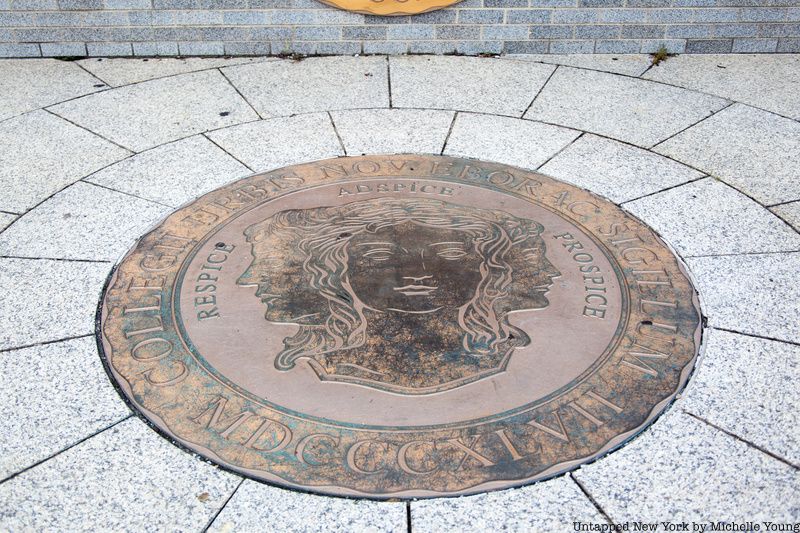
At The City College of New York, Adolph Lewisohn Plaza has a radial pavement design, seemingly in homage to the lost Lewisohn Stadium, but even more quixotically, contains one of the three time capsules buried on the campus of the college. A plaque on the wall states, “Items commemorating life at The City College of New York were buried in a time capsule here on Adolph Lewisohn Plaza of Honor on November 17, 2000.” The opening date of the time capsule will be in the year 2050.
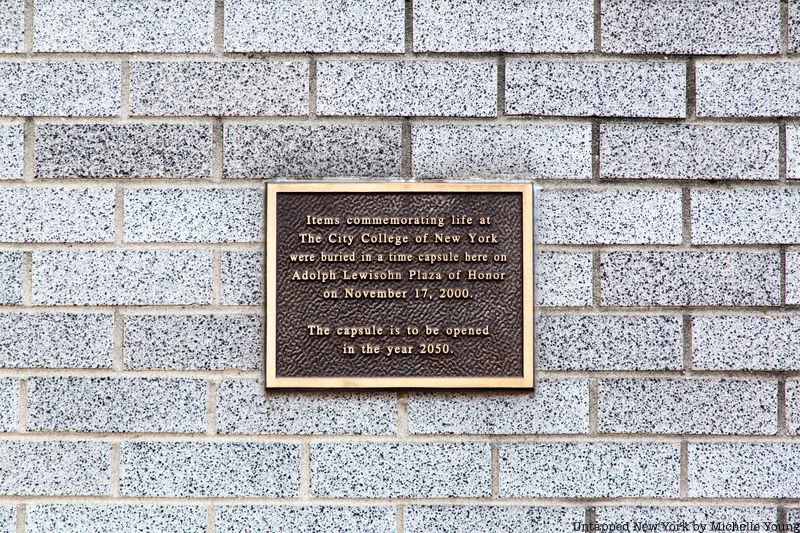
When The City College of New York expanded into its “North Campus,” some of the space formerly allocated for athletic programs was lost. In 1912, City College president asked the City of New York for more land to accommodate the college’s sports teams and was granted two city blocks south of the existing campus in order to construct a stadium. Adolph Lewisohn, a German Jewish immigrant and mining magnate, donated $75,000 to get the stadium constructed.
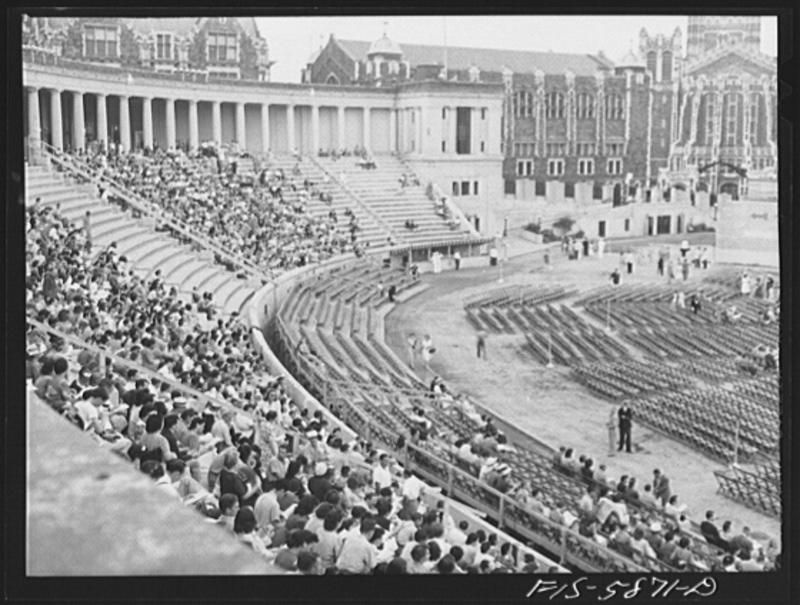
Lewisohn Stadium was designed by architect Arnold W. Brunner who also behind the design of Congregation Shearith Israel on Central Park West and 70th Street and the public baths at Asser Levy Place, a location featured in the film Motherless Brooklyn. Underneath Lewisohn Stadium was located City College’s rifle range, used by ROTC students.
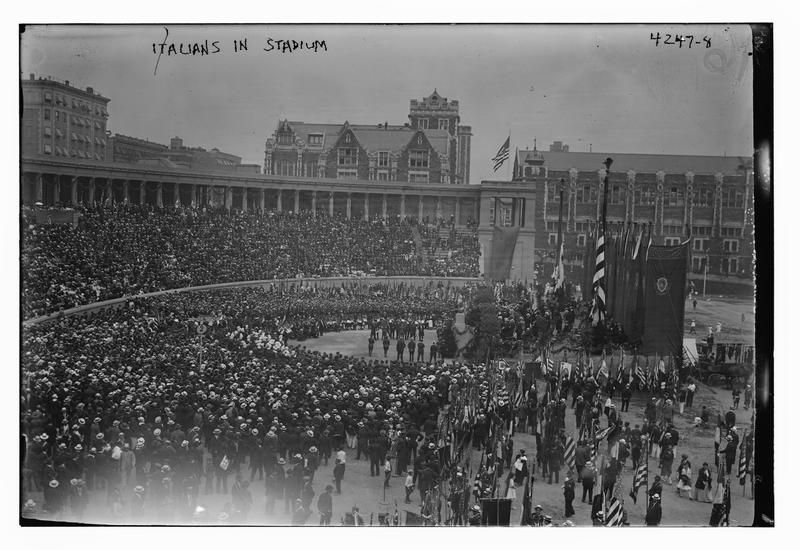
One of the first high-profile events hosted at Lewisohn Stadium was a ceremony that honored Prince Ferdinando of Udine, head of the Italian War Commission on June 23, 1917. Historic images show a parade through the streets and into the stadium with an assortment of flags. Small children dressed in costume, both to represent Italy and as Uncle Sam. The young New York City Mayor John Purroy Mitchel received the Prince. Mitchel would lose re-election that year and die in a training accident in the Army Air Service the next year.
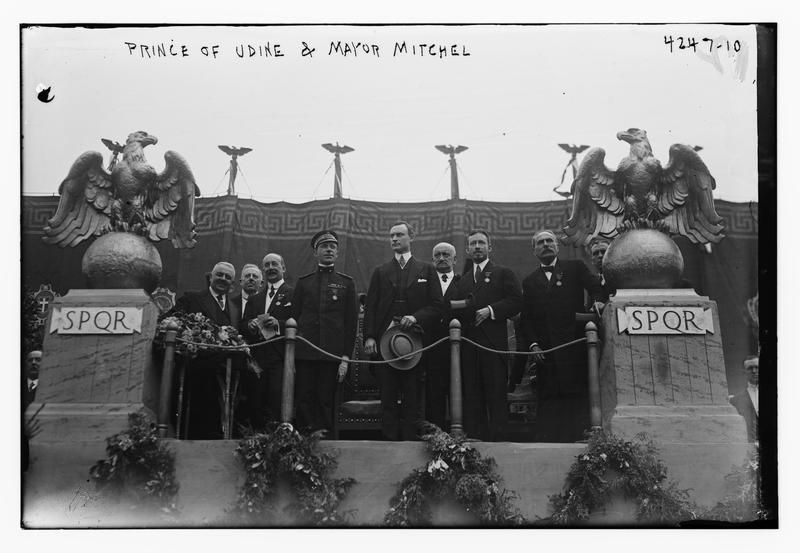
Duke Ellington, Nat King Cole, Billie Holiday, Count Basie, Woodie Guthrie and more performed at Lewisohn Stadium for the NAACP fundraiser for Sgt. Isaac Woodward, “The Blind GI.” The event was chaired by boxer Joe Louis. The former army sergeant was beat brutally by the local police chief, on his way home to South Carolina in 1946 after the war. The driver of his Greyhound bus had refused to let him off to use the restroom at the rest stop, and a heated exchange followed with the driver. Woodward was left unconscious and became permanently blind as a result.
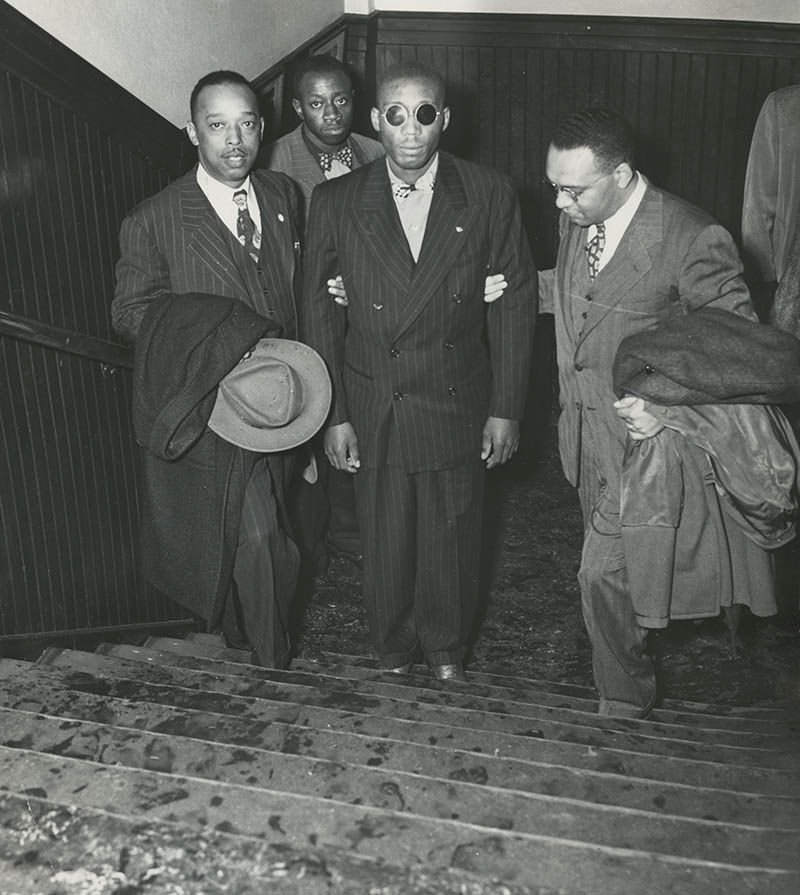
The police chief was acquitted in a trial by an all-white jury, but, according to PBS, the incident had national repercussions. Orson Welles even helped publicize Woodward’s cause on his radio program, and the event set the stage for the desegregation of federal offices and the military two years later, as well as the landmark Supreme Court decision Brown vs. Board of Education in 1954. The PBS documentary is based on the book Unexampled Courage: The Blinding of Sgt. Isaac Woodard and the Awakening of President Harry S. Truman and Judge J. Waties Waring by Federal Judge Richard Gergel and is narrated by André Holland (Moonlight).
Guthrie’s song, “The Blinding of Issac Woodward” became part of his album The Great Dust Storm. Guthrie said he wrote the song “”…so’s you wouldn’t be forgetting what happened to this famous Negro soldier less than three hours after he got his Honorable Discharge down in Atlanta.” And he said of his performance at Lewisohn Stadium, “”I sung ‘The Blinding of Isaac Woodard’ in the Lewisohn Stadium one night for more than 36,000 people, and I got the loudest applause I’ve ever got in my whole life..” The actual number of attendees was around 20,000, but 10,000 more people were turned away from the doors. Woodward himself spoke of his experience and received a 5 minute ovation.
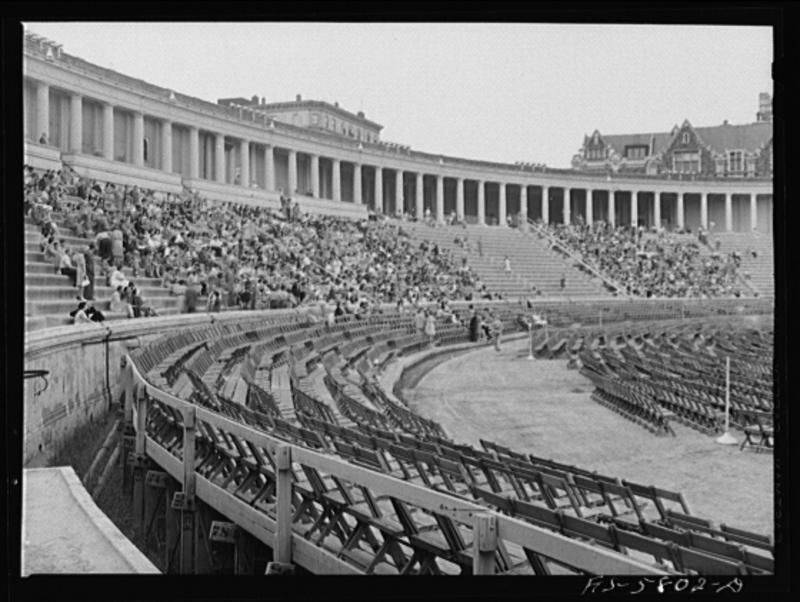
Lewisohn Stadium would be the site of another Civil Rights moment — a commencement speech in 1964 by Martin Luther King Jr. on the morning he found out that NAACP leader Medgar Evers had been murdered in Mississippi. King began by telling the graduates that they would be “moving into a world of catastrophic change and calamitous uncertainty.”
See “The Blinding of Isaac Woodard” tomorrow on PBS, check your local listings. Next, read about the time capsules on the City College of New York campus!
Subscribe to our newsletter